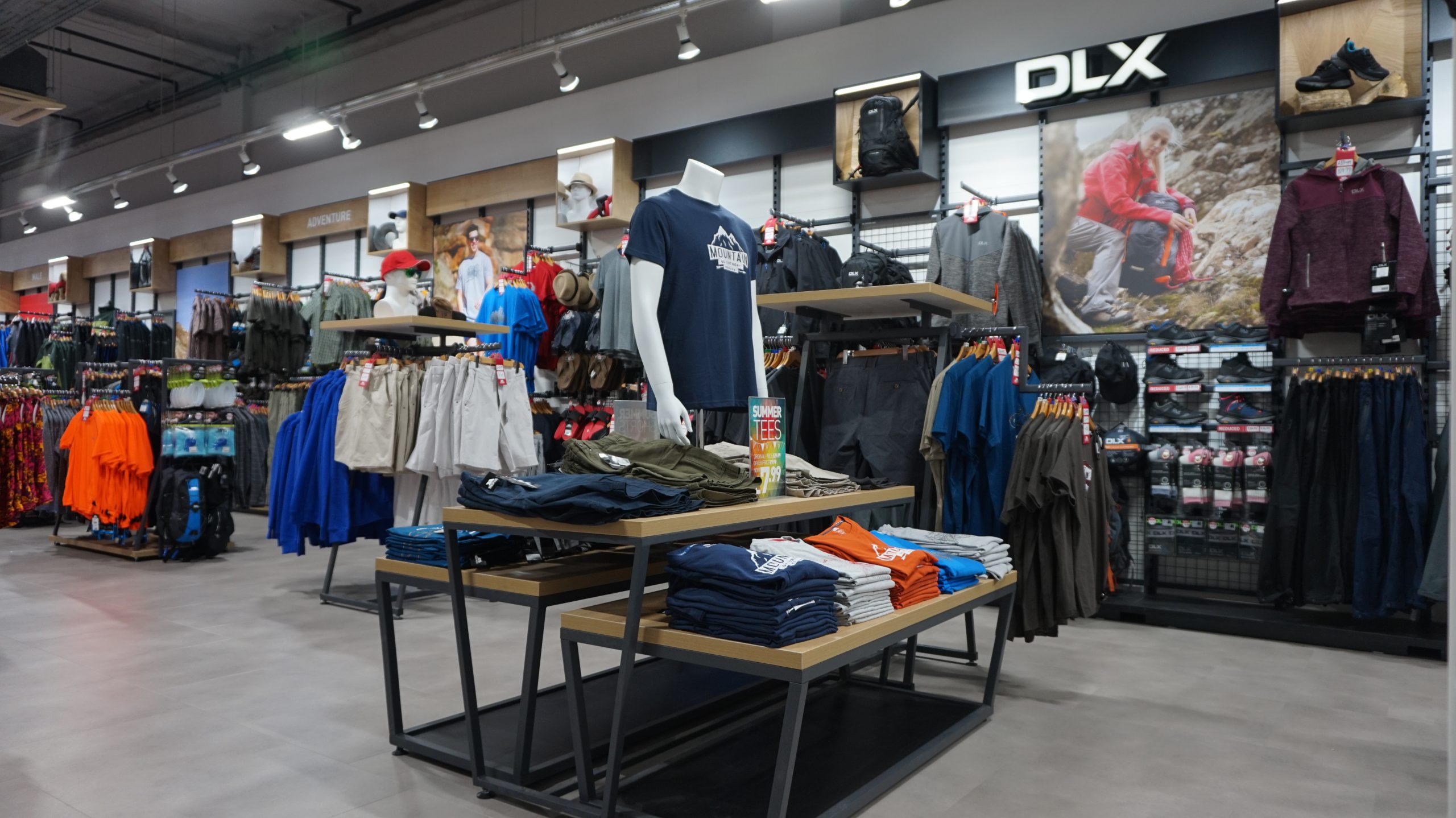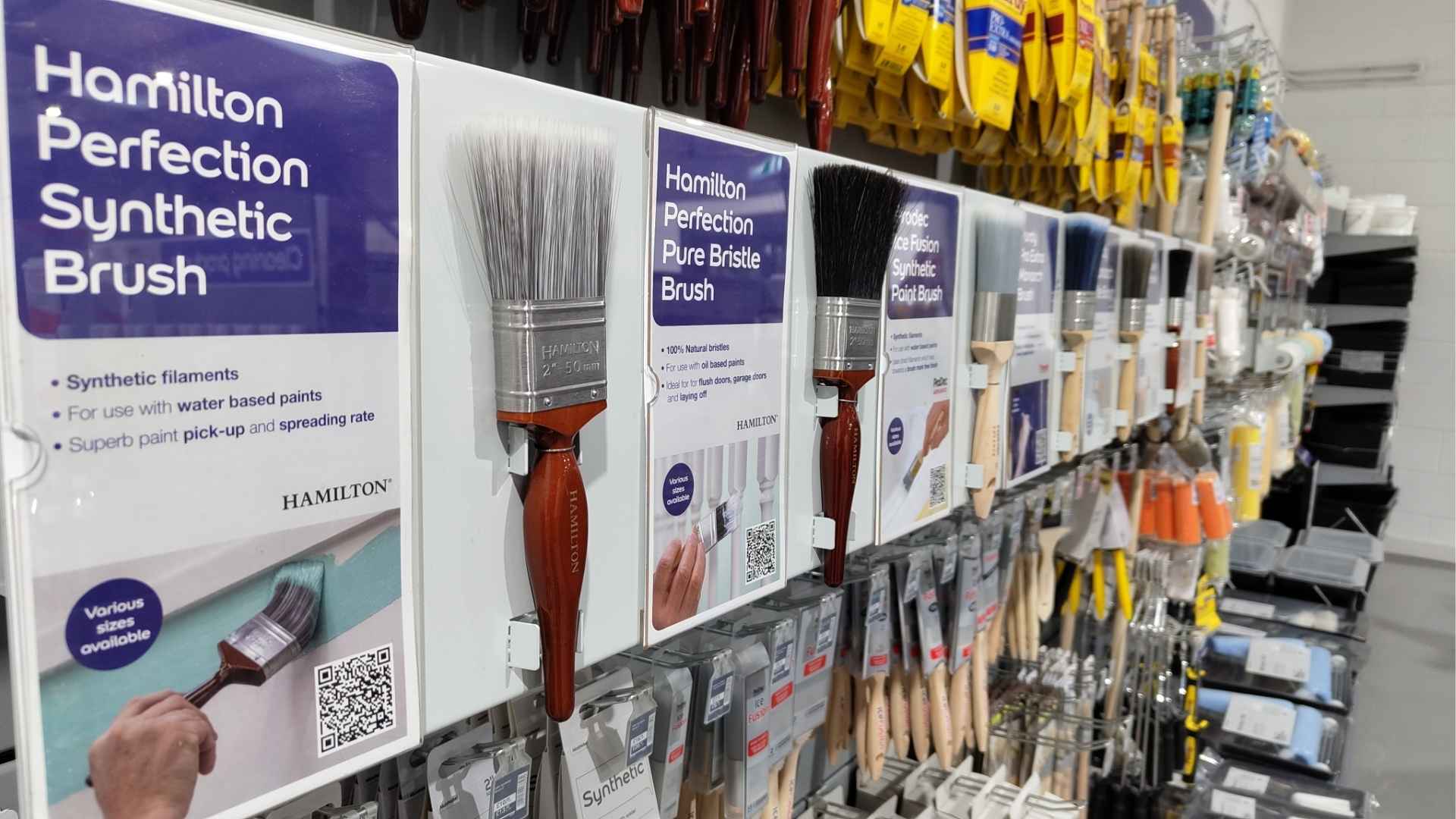As you already know, the way you display clothing in your stores can make a huge difference to the customer experience. If your displays are not well-ordered, organised and thought-through, they can easily confuse the eye and make a space look cluttered.
It’s therefore important to keep your shop floor attractive and inviting, while at the same time employing a strategic and intelligent layout design. After all, a seamless shopping experience is vital for the conversion and retention of customers.
The visitors to your store will want to see something new and fresh almost every time they set foot inside, so you’ll also need to adapt to seasonal changes and regular promotions – all while retaining that sense of order and retaining the consistency of your brand identity.
Of course, it’s impractical to try and create fresh new displays for every new line or product launch – so how can you consistently present clothing in a way that is appealing, effective and adaptable? What retail clothing display systems will serve your store or showroom best in improving customer flow, maximising your square footage and bringing more eyes to your key products?
Our team at Ripple is here to answer all of these questions and more.
What is the best way to create retail clothing displays?

When it comes to displaying your range of clothing and accessories, there is no single way that works best. The effectiveness of different methods will depend on the look and style of the apparel you sell, your brand aesthetic, the size and fundamental layout of your space and the preferences of your audience – to name just a few elements.
However, there are a number of tried and tested approaches that will help you to achieve excellent results. Below, we’ll explore all kinds of solutions to support those approaches.
1. Consider your brand’s “personality”
It’s important to tie the design of your displays into your overall brand identity and style. Always think about your audience and what they expect from a company like yours before deciding on a specific approach.
For example, high-end or luxury clothing stores often adopt a minimalist design, presenting just a few select items on a single rack or shelf in order to attract attention and invite admiration at length.
Conversely, stores selling children’s clothing will regularly display a wide range of sizes and colours of a single item, along with all of its accessories, to make it as easy as possible for busy parents to select exactly what they need with no fuss.
2. Plan according to sight lines and circulation space
How will visitors move through your store? What should they see? In what order? These should be among the first questions you ask yourself.
Naturally, the more appealing garments that a visitor is able to glimpse at any one time, the longer they are likely to stay in your store – and the higher the chance of a purchase becomes. For this reason, it’s a good idea to make sure your most popular items are prominently placed.
The size of your premises is also important. For example, you may need to consider how to display clothing in a small shop. A great technique is to make as much use of perimeter wall space and height within your displays, as this will save on floor space.
Think carefully about the location of regularly-purchased items such as socks and other accessories. Placing them near the tills or point of sale will increase your chance of impulse buys and last-minute purchases.
3. Arrange in complementary collections
It’s often best to plan displays around “collections” of items. Present central eye-catching apparel – or “hero” pieces – as focal points, alongside complementary items and accessories that would appeal to shoppers within the same context.
This may give your customers inspiration to add further pieces to an outfit they are planning – making their experience easier and increasing the chance of multiple pieces being purchased at once.
The items and collections you stock will most likely change according to the seasons. For this reason, it’s a very sensible choice to create adaptable displays that can be easily and quickly swapped out or rearranged.
Retail clothing display ideas
Our design team at Ripple has over 40 years’ worth of experience in creating bespoke clothing display solutions to suit any brand. Here, we’ll explore some of the retail clothing display stands and units that perform best for our clients.
Free-Standing Display Units (FSDUs)

As the name suggests, these displays stand independently of other fixtures, making it easy to move them around your store when revising your layout.
Units of this kind are extremely versatile. They can be designed to be digitally integrated, so that product highlights or advertisements may be shown in your store. You could even include interactive content to further engage visitors.
Gondola Displays

A very popular type of freestanding unit, gondolas offer shelving on both sides, allowing for the easy creation of aisle systems. They can also enable the easily-accessible side-by-side presentation of products in open spaces.
Table Displays

Perfect for creating focal points, table displays present a great opportunity for flexible, creative merchandising. They really draw the eye and allow you to showcase full sets, outfits or collections in the same space, demonstrating their complementary nature.
They’re also a great way to draw attention to new lines as they arrive.
Wall Displays

If you have a relatively small amount of floorspace, you may be wondering how to display clothes on a wall in order to maximise the potential of your store’s footprint.
Our design team at Ripple can create attractive bespoke wall displays of all kinds. These will enable you to hang garments at different levels and in attractive arrangements, using shelves, hooks or rods for a really creative solution.
For example, our work for Trespass’s Windsor store showcases the impact that can be achieved by presenting items at varied display heights on a feature wall.
Here, products within a specific category (in this case coats and jackets) are displayed alongside mannequins that showcase those products styled using other available pieces (t-shirts). On another wall, complementary pieces (t-shirts and trousers) are displayed side-by-side and above and below one another to provide inspiration for outfits.
Shelving Displays

Shelving is a great space-saving option that can be used to house multiple folded garments at once, as well as shoes and other accessories.
It’s extremely versatile and can be integrated into all kinds of store layouts, often as wall units.
Pegboard Displays

Pegboards offer a flexible and easily adjustable solution for retailers that need to adapt and rearrange their displays frequently.
They are perfect for accessories or smaller, lighter garments, as their use of pegs or hooks makes them highly customisable. In this setup we created for Trespass, the product is organised neatly on pegs, making all items accessible and easy to browse.
This approach helps retailers to address the common challenges in clothing stores – such as clutter and limited space – by enabling quick reconfigurations and improving product visibility, encouraging customers to explore and engage with the full range of items on display.
Waterfall/Straight Arm Racks

Retail clothing racks of this kind are another exceptionally popular option in clothing stores and can allow you to display numerous pieces in a cascading or straight format.
It’s a great way to showcase the same design in a number of different sizes or colours, as it maximises the visibility of multiple items at once.
Display solutions of this kind are ideal for feature walls and focal areas.
POS Displays

When it comes to last-minute purchases and impulse buying, POS (Point of Sale) displays are often very effective. They can be placed near tills to provide customers with an opportunity to
grab useful accessories and items that they may otherwise have missed – while doubling as an upselling opportunity.
They also work well to highlight sales or to display accessories and seasonal items.
Fixture Cubes/Boxes

Modular displays offer a solution that is both attractive and practical, as these fixtures can easily be removed, swapped or revised season-by-season.
You can stack cubes or boxes in a range of different ways to create interest, presenting folded clothes, shoes and accessories in an eye-catching manner that also adds great flexibility for your store layout and design.
Window Displays

Window displays are an absolutely vital aspect of any store design. They provide what is often the absolute first impression of your brand to passers-by, and, when well-executed, can create the right level of interest to influence foot-traffic, bringing more visitors into your premises.
The above are just a few of the options for retail clothing displays offered by our designers at Ripple. For further ideas and advice, don’t hesitate to contact the team today. We will be very happy to assist you in developing your ideas and transforming your retail space.



